
Students will explore how much they would weigh on a different world/planet and why their weight would be different.
- Subject:
- Physical Science
- Physics
- Science
- Material Type:
- Lesson
- Provider:
- Smithsonian Institution
- Date Added:
- 02/26/2019

Students will explore how much they would weigh on a different world/planet and why their weight would be different.
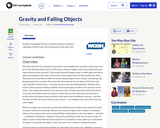
Students investigate the force of gravity and how all objects, regardless of their mass, fall to the ground at the same rate.

This project focuses on reinforcing students understanding of chemical bonds, nomenclature, lewis structure, and compounds.

This activity is a part of the lesson plan "Red Light, Green Light". In this activity students will gain first hand experience on how friction affects motion. Students will build a hovercraft with a balloon and CD (compact disk), learning that a bed of air under an object significantly reduces the friction as it slides over a surface.

This activity goes along with the lesson "May the Force Be With You". The purpose of this activity is to demonstrate Newton's 3rd Law of Motion, which is the physical law that governs thrust in aircraft. Students will do several activities that show that for every action there is an equal and opposite reaction.

The objectives for this lesson are: describe how the average kinetic energy of matter is measured; distinguish between heat and temperature, and calculate a change in substance from one state to another; understand the value of precise data for use in a comparative study; demonstrate that a colored surface will absorb more heat from a source of light than a white surface; explain how instruments detect and measure changes in heat and temperature; identify the ways in which heat is transferred; investigate the absorption of heat energy by matter; analyze data and establish a relationship between factors involved. Students will rotate through six discovery stations.
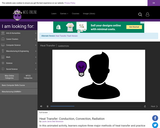
In this animated activity, learners explore three major methods of heat transfer and practice identifying each.

In this lesson students will learn about conduction, convection, and radiation. Students will also learn about heat and temperature, and the relatonship between kinetic and potential energy.

In this lesson, students engineer a circuit and explain how energy is passed from one source to another.

Students will construct a CD hovercraft and apply Newton's Laws of Motion to make them work. They will also investigate how hovercraft reduce friction, learn how the technology is used in training astronauts for space missions, and design their own hovercraft competitions.

Students learn how electricity is generated and how design variables affect electricity production. This lesson explores the physics of how generators work and some variables to improve performance.

The aim of this lesson is to introduce the concepts of heat and temperature, which many students find confusing. Students will be asked to explore and discuss situations where even though the same amount of heat is absorbed by several substances, the increase in temperature of the substances is different. Students will also carry out several experiments to compare and relate the situations where the same amount of heat absorbed by substances will result in different temperatures.
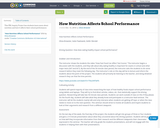
This PBL Inquiry Project has students learn more about nutrition and how it affects their school performance.
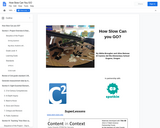
A lesson plan for 4th grade science. Kids create a version of the marble roll project to simulate a manufacturing process.
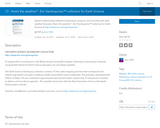
Explore relationships between temperature, pressure, and humidity with daily weather forecasts.
GeoInquiries are designed to be fast and easy-to-use instructional resources that incorporate advanced web mapping technology. Each 15-minute activity in a collection is intended to be presented by the instructor from a single computer/projector classroom arrangement. No installation, fees, or logins are necessary to use these materials and software.
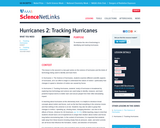
This lesson is the second in a two-part series on the science of hurricanes and the kinds of technology being used to identify and track them. In this activity students? study of hurricanes is broadened by exploring how technology and science are used today to identify, measure, and track powerful tropical storms to better warn and secure people from their often-devastating impact.
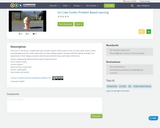
In this lesson, students will come up with a sketch of their plan for their ice cube cooler, build a cooler, and investigate how this cooler solves their ice cube melting problem. Students will then identify strengths and weaknesses in their designs as well as identify improvements they could make in the future.

This lesson can be used as an introduction to radioactivity. Students should have familiarity with the scientific notation and the units milli, micro, and nano. Students will be introduced to being science/math detectives by trying to figure out the relationship of organisms using graphs. Students then are introduced to the controversy around the Shroud of Turin, which has been carbon dated. What is the process of carbon dating, and can the results be believed?

This resource is a part of the I'm Late, I'm Late, for a Radioactive Date! This resource provides step by step ways for teachers to implement the lesson.

This resource is a part of the I'm Late, I'm Late, for a Radioactive Date lesson plan. This resource includes links to student worksheets.